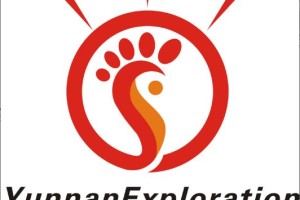
Wenming Mosque in Eshan County, Yuxi
Wenming Mosque (文明清真寺) is located in Wenming Township (文明乡), Eshan County (峨山县), Yunnan Province (云南省). It was originally built in the early Ming Dynasty and later reconstructed in the 21st year of the Guangxu reign of the Qing Dynasty (1895). After suffering destruction in a major earthquake on January 5, 1970, it was rebuilt on the original site in 1975. The newly constructed mosque covers approximately 10.5 mu (about 7,000 square meters), with a total building area of 2,139 square meters. The main structure is four stories tall. The first floor contains auxiliary facilities such as a reception room, meeting rooms, dormitories for Ahong (阿訇) and Manla (满拉), and a bathhouse.
- Chinese Name: 文明清真寺
- Location: Wenming Township (文明乡), Eshan County (峨山县), Yunnan Province (云南省)
- Postal Code: 653201
- Current Imam: He Shirong (合士荣)
- Current Religious School Director: He Shixiong (合士雄)
Historical Background
Original Construction
The mosque was initially built during the early Ming Dynasty.
Renovation and Reconstruction
It was significantly renovated in the 21st year of the Guangxu reign (1895). Due to population growth, the prayer hall was also expanded. However, it was destroyed in a powerful earthquake on January 5, 1970. In 1975, the mosque was rebuilt on its original site.
Historical Records
According to the Gazetteer of Hexi County (《河西县志》) from the Qing Kangxi era and the Republic of China period, the Wenming Village (文明村) area was formerly known as Wenshachong (文沙冲), also called Luweicong (芦苇丛). The local Muslim population is primarily made up of the He (合) and Ma (马) families. The He family traces its lineage to Hajing (哈政), a descendant of Saidianchi’s (赛典赤) second son and seventh daughter. The Ma family originally came from Gaoshikan (高石坎), Yingtian Prefecture (应天府), in Nanjing (南京).
As of 1993, the total population of the community was 1,751 people, including:
- 9 religious school directors (学董)
- 6 Ahong (阿訇)
- 54 male Manla (满拉)
- 26 female Manla
All belong to the Gedimu (格迪目) tradition. Many members are engaged in trade, with business activities extending to Southeast Asia, and over 100 individuals reside overseas, particularly in Thailand.
Scale and Layout
The newly built mosque occupies approximately 10.5 mu with a total construction area of 2,139 square meters. The main building has four floors:
- Ground floor: Reception room, meeting room, dormitories for Ahong and Manla, bathhouse
- Upper three floors: Prayer halls accommodating over 1,000 worshippers
- A women’s prayer hall is included
- The Bangke Tower (邦克楼) is the tallest structure within the complex, designed with elegant proportions and superior craftsmanship
The courtyard features perennial plants, flowers, pines, and cypresses, creating a serene and solemn atmosphere.
Cultural Exchange and Cooperation
The mosque once housed many valuable religious artifacts and scriptures. Though some couplets and plaques were destroyed in the earthquake, it still preserves 26 Arabic copies of the Qur’an, 8 bilingual Chinese-Arabic volumes, and a collection of calligraphic plaques donated by prominent domestic and international Muslim figures.
Notable examples include:
- “Revitalize China” (振兴中华) by Ma Guangting (马光廷), General Manager of Thailand International Tourism & Trade Co. and Vice Chairman of the Yunnan Association in Bangkok
- “Promote the Sacred Faith” (发扬圣教) by Ma Weijing (马维精), General Manager of Siwei Antiques Co. in Chiang Mai, Thailand
The mosque community has a strong revolutionary history, with notable figures such as Lin Changan (林长安) and Ma Yaoting (马耀廷) participating in the 1911 Revolution and later in the anti-Yuan campaign led by General Cai E (蔡锷) in Yunnan.
Other important figures include:
- He Yun (合晕): Enrolled in the Guilin Branch of the Whampoa Military Academy in 1942, later served as a major instructor and principal of Wenming School
- He Guoyi (合国一): Former chairman of the mosque’s Sino-Arabic school
- Ma Baojing (马宝晶): Served as religious school director for 18 years, widely respected for his dedication to mosque construction and education
Following China’s reform and opening-up, and the implementation of ethnic and religious policies, the mosque’s economy has flourished. It now operates:
- A gas station
- A rice mill
- A halal food service shop
Islamic Jingtang (经堂) education has resumed and developed. The mosque has hosted visiting delegations from:
- Chiang Mai Mosques (Thailand)
- Southern Islamic Delegation (Thailand)
- Islamic delegation (Malaysia)
- Islamic delegation (United Arab Emirates)
Pilgrims (Hajj) from the community include:
Ma Ende (马恩德), He Zhongwen (合中文), Ma Zeqing (马泽清), Ma Shengchang (马盛昌), Ma Zhengfa (马正发), Ma Xingzhi (马兴志), He Shirong (合士荣), He Jiqing (合吉清), Ma Cailin (马才林), Ma Xuanchu (马选初), Ma Qihui (马启会), Ma Zhengxi (马正玺), Ma Cun’en (马存恩), He Chaoliang (合朝亮), Ma Bowen (马宝文), Ma Shanheng (马善恒)
Female pilgrims include:
Ma Fengying (马凤英), Ma Xihua (马茜花), Na Yuping (纳玉屏), Qian Huiying (钱惠英), Mu Nuoping (沐糯屏), Ma Meiying (马美英), Zhang Zhuping (张竹屏), He Mingzhen (合明珍)
Location and Transportation
Wenming Mosque is located in Wenming Township (文明乡), Eshan County (峨山县), Yunnan Province (云南省).

 7 Days GolfingTour
7 Days GolfingTour
 8 Days Group Tour
8 Days Group Tour
 8 Days Yunnan Tour
8 Days Yunnan Tour
 7 Days Shangri La Hiking
7 Days Shangri La Hiking
 11 Days Yunnan Tour
11 Days Yunnan Tour
 6 Days Yuanyang Terraces
6 Days Yuanyang Terraces
 11 Days Yunnan Tour
11 Days Yunnan Tour
 8 Days South Yunnan
8 Days South Yunnan
 7 Days Tea Tour
7 Days Tea Tour
 8 Days Muslim Tour
8 Days Muslim Tour
 12 Days Self-Driving
12 Days Self-Driving
 4 Days Haba Climbing
4 Days Haba Climbing
 Tiger Leaping Gorge
Tiger Leaping Gorge
 Stone Forest
Stone Forest
 Yunnan-Tibet
Yunnan-Tibet
 Hani Rice Terraces
Hani Rice Terraces
 Kunming
Kunming
 Lijiang
Lijiang
 Shangri-la
Shangri-la
 Dali
Dali
 XishuangBanna
XishuangBanna
 Honghe
Honghe
 Kunming
Kunming
 Lijiang
Lijiang
 Shangri-la
Shangri-la
 Yuanyang Rice Terraces
Yuanyang Rice Terraces
 Nujiang
Nujiang
 XishuangBanna
XishuangBanna
 Spring City Golf
Spring City Golf
 Snow Mountain Golf
Snow Mountain Golf
 Stone Mountain Golf
Stone Mountain Golf












